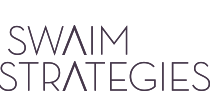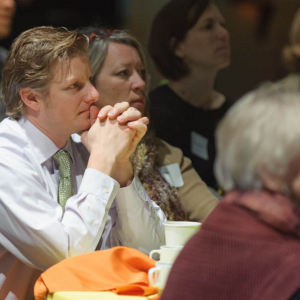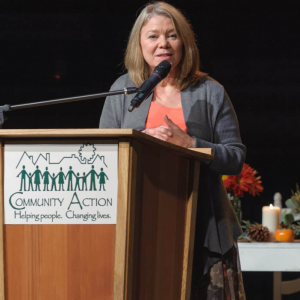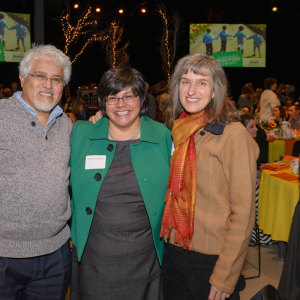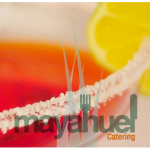Acquisition Events Decoded
Community Action’s Acquisition Event: People You Should Know
Are you hosting your events to cultivate current donors or to introduce new donors to your organization? Community Action has an annual breakfast that successfully connects community leaders to their work by sharing client stories and celebrating the work to address poverty in Washington County. Last fall their People You Should Know breakfast brought 330 guests to be introduced to their important work.
We wanted to share with you the event model that they use in planning their strategy.
The Free Acquisition Event
The purpose of an acquisition event is to introduce new and potential donors to your organization. In this free, typically one-hour-long event, guests will be introduced to your organization. They should receive facts about your organization, a story that provides an emotional hook and a compelling ask for multiple-year support at clearly defined giving levels.
The following steps outline what needs to happen in order for your acquisition event to be a successful way of cultivating new donors.
Step One: The Point of Entry
At the beginning of any lasting relationship it’s key that early interactions are meaningful. Potential donors need an active way to connect with and learn about your organization. Sending them fliers in the mail or directing them to your website is not enough. The point of entry event represents this opportunity and it is the start of the donor cultivation cycle.
- Provide basic facts about your organization including your vision, mission and needs.
- Provide a compelling appeal. This typically takes the form of a client story of someone who has been impacted by your work.
- Have a system in place to accurately capture the names, addresses, phone numbers and email addresses of the guests who attend. We recommend Greater Giving.
Step Two: Follow Up and Involve
After the introduction, while the memory of the event is still fresh, it’s important that the next interaction happen sooner than later. To let too much time pass between the first and second interaction can jeopardize the possibility of building a long-term relationship.
The second step in the donor cultivation cycle is to follow up with every person who attended the acquisition event. It’s important to follow up within a week after the event and to follow up with a phone call, not an email.
In your conversation you should:
- Thank them for attending the event
- Get their thoughts about the event, get them talking
- Actively listen and ask open ended questions
- Ask if they could see themselves getting involved with the organization
- Invite them for a tour or a follow up meeting
- Ask their table hosts to send them a thank you as well
Step Three: Cultivation
The third step involves engaging them beyond the event. Donors want to know that you need them and that their gifts will make a difference in your organization’s ability to accomplish its mission.
- Cultivation – Look for future opportunities to engage, inform and connect to the donor.
- Another Donation – When making the ask, what medium will you choose? Over the phone, at an event, online or by mail? All work but the bigger gifts come out of a face-to-face ask.
- Specific Giving Levels – Before the ask is made, there should be clear giving levels that a donor can commit to.
- Thank – Provide personal follow up with the donor and thank them for their gift.
Step Four: Major Donors Introducing Others
The fourth and final step is when individual donors introduce new and potential donors to the organization through the acquisition event. This allows you to expand your network of support through the networks of others.
- Now that you have cultivated a donor into a major donor, they are a prime candidate to be a table host at your next event.
- Encourage existing donors to share their stories of connection to the organization’s mission.
Based on A Step-by-Step Guide to Building Lifelong Donors (3rd ed.) by Terry Axelrod
Seattle, WA: Raising More Money Publications, 2004
Photos by Andie Petkus Photography
